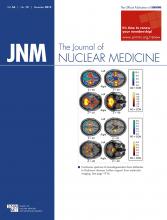G.K. von Schulthess, ed.
Philadelphia, PA: Wolters Kluwer, 2016, 704 pages, $299.99
Because the imaging specialists of the world have come to recognize the limitations of anatomy-based imaging, the rapid adoption of hybrid imaging is not surprising. The data show that nuclear imaging methods and anatomic imaging methods are highly complementary, with the former providing higher contrast sensitivity and the latter providing higher spatial and temporal resolution. In many ways, hybrid imaging produces the best of two worlds. The frequently critical need to precisely localize lesions within the anatomic context may not be possible with PET or SPECT alone. Combining them with CT allows the lesions to be identified easily by virtue of the high sensitivity and contrast of PET and SPECT. It has been well documented that hybrid imaging with CT and PET or SPECT increases the diagnostic sensitivity and specificity of the single modality, thus making the integrated approach more accurate. The same can be expected from adding MRI to PET or SPECT.
This book, a third edition, is clinically oriented. It focuses on PET/CT, SPECT/CT, and PET/MRI and provides precisely the information one needs to know. It covers both established and emerging indications for clinical applications and follows a practical and disease-based structure. Written by 105 world-renowned experts on various types of imaging, the book is well organized into 7 parts with 73 chapters. Part 1, with 12 chapters, deals with the basics of hybrid imaging technology, and part 2, with 4 chapters, discusses clinical PET and SPECT radiopharmaceuticals. Part 3, with 10 chapters, reviews clinical hybrid imaging of the normal and diseased brain, and part 4, with 4 chapters, handles clinical multimodality imaging of the heart. Part 5, with 32 chapters, discusses clinical hybrid imaging in body oncology, including imaging artifacts, radiation therapy, and tumors of the head and neck, thorax, gastrointestinal and genitourinary tracts, bones and joints, and lymphatic and hematopoietic systems. Part 6, with 8 chapters, deals with nonneoplastic body diseases, and finally part 7, with 3 chapters, reviews clinical hybrid imaging in pediatric patients. The 375 figures with more than 1,600 superb illustrations document the use of integrated imaging and provide an excellent visual reference for interpreting studies. The 48 tables and updated references are also useful.
This textbook provides insight into how the established hybrid technologies are used and how the less well established procedures may become useful. In addition, the dos and don’ts of hybrid imaging are provided, as well as guidelines on how it can be clinically advantageous and in which clinical situations it applies. This book is ideal for users of clinical hybrid imaging because it fully integrates all applications, allows easy comparison of various modalities, and helps one decide whether to use PET/CT, PET/MRI, or SPECT/CT to solve a clinical problem. I highly recommend it to trainees and practitioners in the fields of nuclear medicine, radiology, oncology, neurology, cardiology, and family medicine.
Footnotes
Published online Oct. 1, 2015.
- © 2015 by the Society of Nuclear Medicine and Molecular Imaging, Inc.







